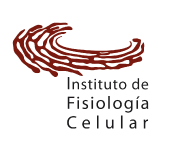Spindle Dynamics during Meiotic Development of the Fungus Podospora anserina Requires the Endoplasmic Reticulum-Shaping Protein RTN1
López-Fuentes, A. de J., Nachón-Garduño, K. N., Suaste-Olmos, F., Mendieta-Romero, A., & Peraza-Reyes, L. (2021). Spindle Dynamics during Meiotic Development of the Fungus Podospora anserina Requires the Endoplasmic Reticulum-Shaping Protein RTN1. MBio, 12(5). https://doi.org/10.1128/mbio.01615-21
The endoplasmic reticulum (ER) is an elaborate organelle composed of distinct structural and functional domains. ER structure and dynamics involve membrane-shaping proteins of the reticulon and Yop1/DP1 families, which promote membrane curvature and regulate ER shaping and remodeling. Here, we analyzed the function of the reticulon (RTN1) and Yop1 proteins (YOP1 and YOP2) of the model fungus Podospora anserina and their contribution to sexual development. We found that RTN1 and YOP2 localize to the peripheral ER and are enriched in the dynamic apical ER domains of the polarized growing hyphal region. We discovered that the formation of these domains is diminished in the absence of RTN1 or YOP2 and abolished in the absence of YOP1 and that hyphal growth is moderately reduced when is deleted in combination with and/or . In addition, we found that RTN1 associates with the Spitzenkörper. Moreover, RTN1 localization is regulated during meiotic development, where it accumulates at the apex of growing asci (meiocytes) during their differentiation and at their middle region during the subsequent meiotic progression. Furthermore, we discovered that loss of RTN1 affects ascospore (meiotic spore) formation, in a process that does not involve YOP1 or YOP2. Finally, we show that the defects in ascospore formation of mutants are associated with defective nuclear segregation and spindle dynamics throughout meiotic development. Our results show that sexual development in involves a developmental remodeling of the ER that implicates the reticulon RTN1, which is required for meiotic nucleus segregation. Meiosis consists of a reductional cell division, which allows ploidy maintenance during sexual reproduction and which provides the potential for genetic recombination, producing genetic variation. Meiosis constitutes a process of foremost importance for eukaryotic evolution. Proper partitioning of nuclei during this process relies on accurate functioning and positioning of the spindle, the microtubule cytoskeletal apparatus that conducts chromosome segregation. In this research, we show that in the model fungus Podospora anserina this process requires a protein involved in structuring the endoplasmic reticulum (ER)-the reticulon RTN1. The ER is a complex organelle composed of distinct structural domains, including different peripheral domains and the nuclear envelope. Our findings suggest that spindle dynamics during meiosis relies on remodeling of the ER membrane, which involves the activity of RTN1. Our research discloses that the proteins implicated in shaping the ER are main contributors to the regulation of nuclear dynamics during the sexual cycle.




